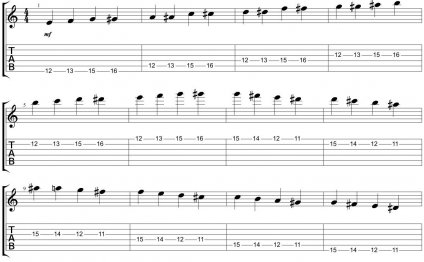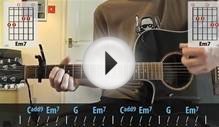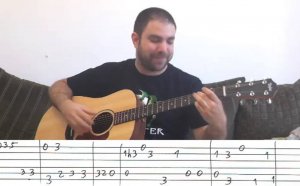
Lessons for guitar Beginners
The second chord we'll learn, the C major chord (often called a "C chord"), is no more difficult than the first G major chord.
Place your third finger on the third fret of the fifth string. Now, put your second finger on the second fret of the fourth string. Finally, put your first finger on the first fret of the second string.
Here's where you have to be slightly careful. When playing a C major chord, you do NOT want to strum the sixth string. Watch your pick to make sure you only strum the bottom five strings when you are first learning the C major chord. Test this chord as you did with the G major chord, to make sure all notes are ringing clearly.
Playing a D major chord
Some beginners have slightly more difficulty playing a D major chord (often called a "D chord"), since your fingers have to cram into a fairly small area. Shouldn't be too much of a problem, however, if you can comfortably play the other two chords.
Place your first finger on the second fret of the third string. Then, put your third finger on the third fret of the second string. Lastly, place your second finger on the second fret of the first string. Strum only the bottom 4 strings when playing a D major chord.
Spend some time familiarizing yourself with these three chords... you will use them for the rest of your guitar-playing career. Make sure you can play each of the chords without looking at the diagrams. Know what the name of each chord is, where each finger goes, and which strings you strum or do not strum.
YOU MIGHT ALSO LIKE



Share this Post
Related posts
Acoustic Blues Guitar Lessons for Beginners
Every guitar player experiences a major turning point early on in their education. After the requisite, and often times…
Read MoreYouTube Guitar lessons for Beginners acoustic
How to Get the Most from Your YouTube Learning Experience Want to improve your playing, but don’t have money or time to dedicate…
Read More










